The ICYMARE conference in Bremen
Hi, my name is Josephine, I am a student in the Master’s program Biological Oceanography at Geomar Helmholtz-Center for Ocean Research. I am currently writing my Master’s thesis at the Research and Technology Center (FTZ) in Büsum, which is part of Kiel University. My research focuses on the diversity and composition of fish communities in tidal creeks of the German Wadden Sea. My thesis is part of a project that consists of a field survey where fish and benthic communities were sampled at two locations in the Wadden Sea between May and November 2024.
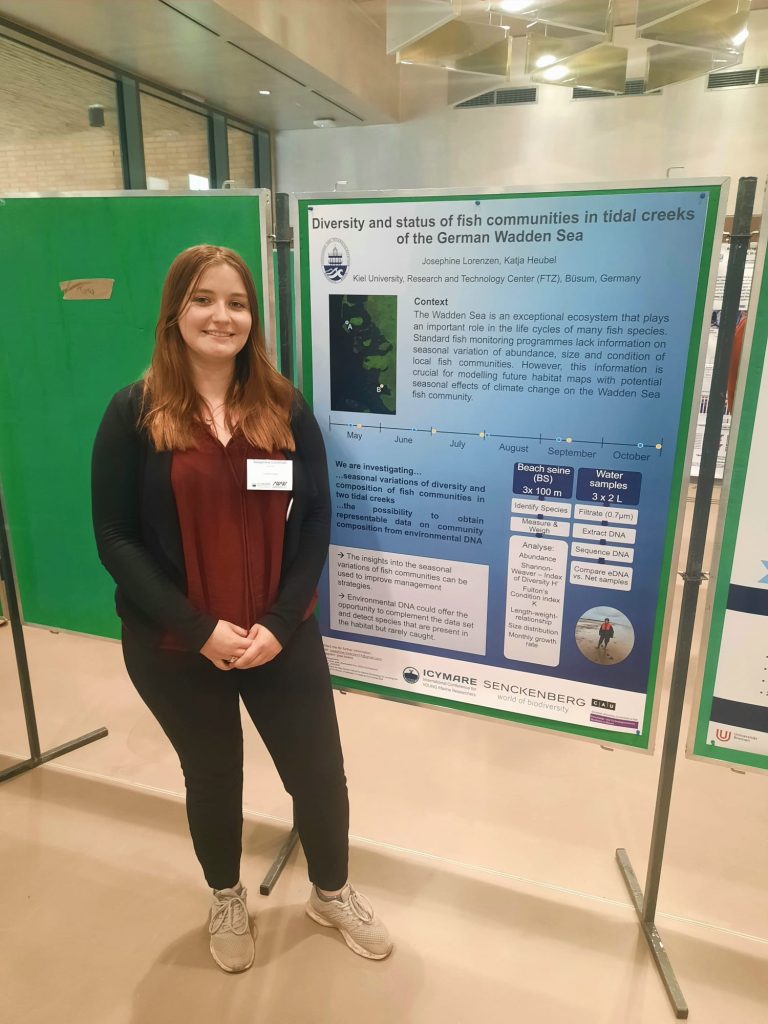
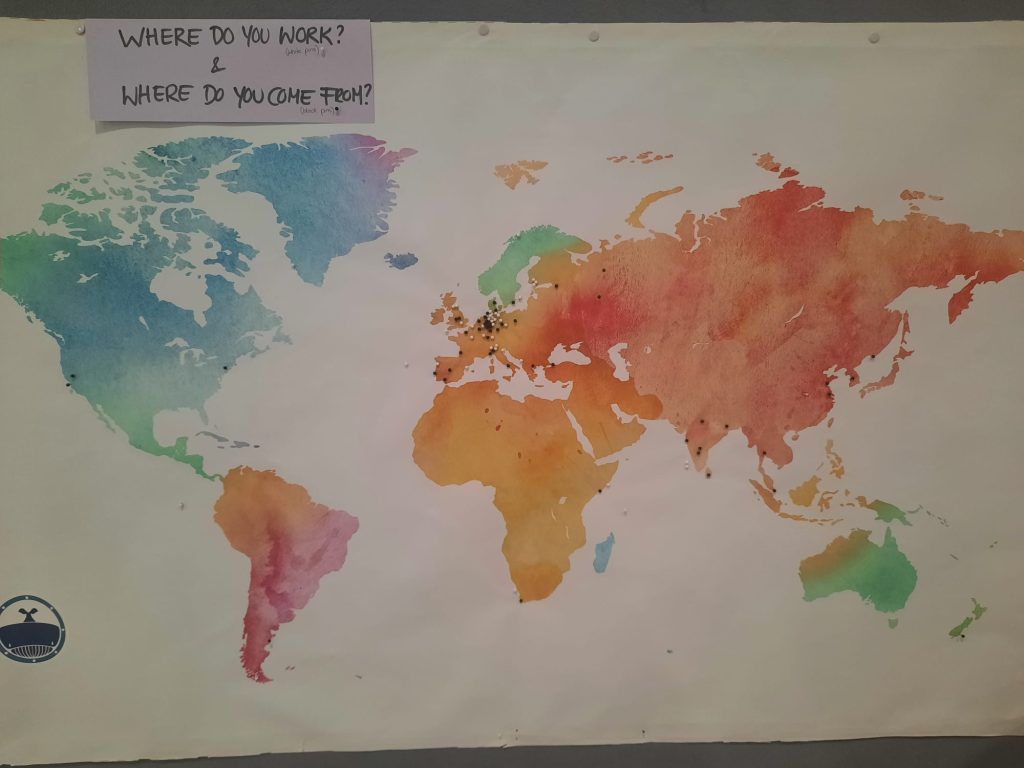
The FYORD travel grant made it possible for me to attend the ICYMARE conference in Bremen, where I presented my research plan in a poster session. The conference took place from September 15th to 20th and generally addresses early career researchers in the field of marine sciences. Most of the participants were PhD students, some recently graduated Postdocs and some master students. The conference started with a get-together for drinks and snacks at the Bremen Overseas Museum and was followed by four days full of interesting talks, a poster session, excursions and ended with a big party. Each day started with a keynote talk held by experienced scientists. What I really enjoyed about this was that most of the talks were interactive and presented a range of career options following a degree in marine sciences. I really had the impression that all these talks were conceptualized to provide guidance, valuable insights and reassurance to young researchers like me. My favorite keynote talk was about merging “Constructive Journalism” and Research for the Greater Good by Christoph Sodemann from the company Constructify.Media, mostly because I have never heard of the concept of “Constructive Journalism”, and I feel like that is exactly what the world needs more of right now. The rest of the day was filled with a variety of presentations, always in two parallel sessions, so that there was always an interesting talk to listen to. There were coffee breaks and a lunch break each day, where you could network or take a look at the posters or enjoy some time in the creative corner, where you could express your passion for marine science and more in little artworks for everyone to see or for you to take home. Every day after lunch, there was a so-called “round table”, where we could hear and talk about topics that are important to us, for example, mental health during a PhD or how to handle conflicts at your workplace.
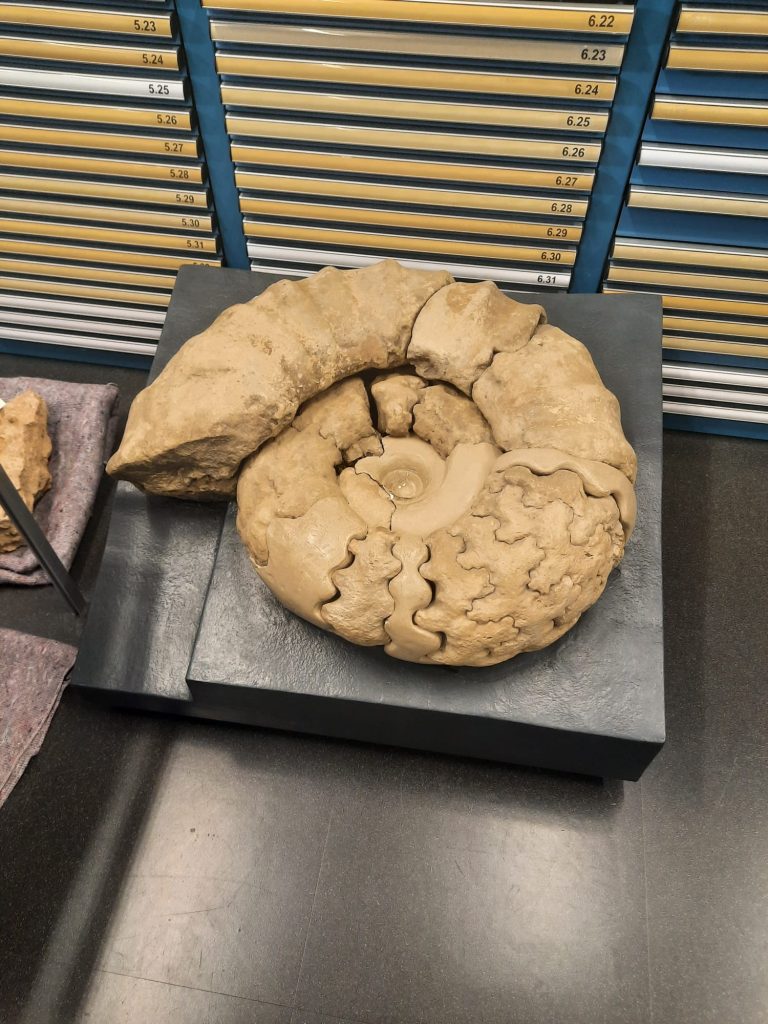
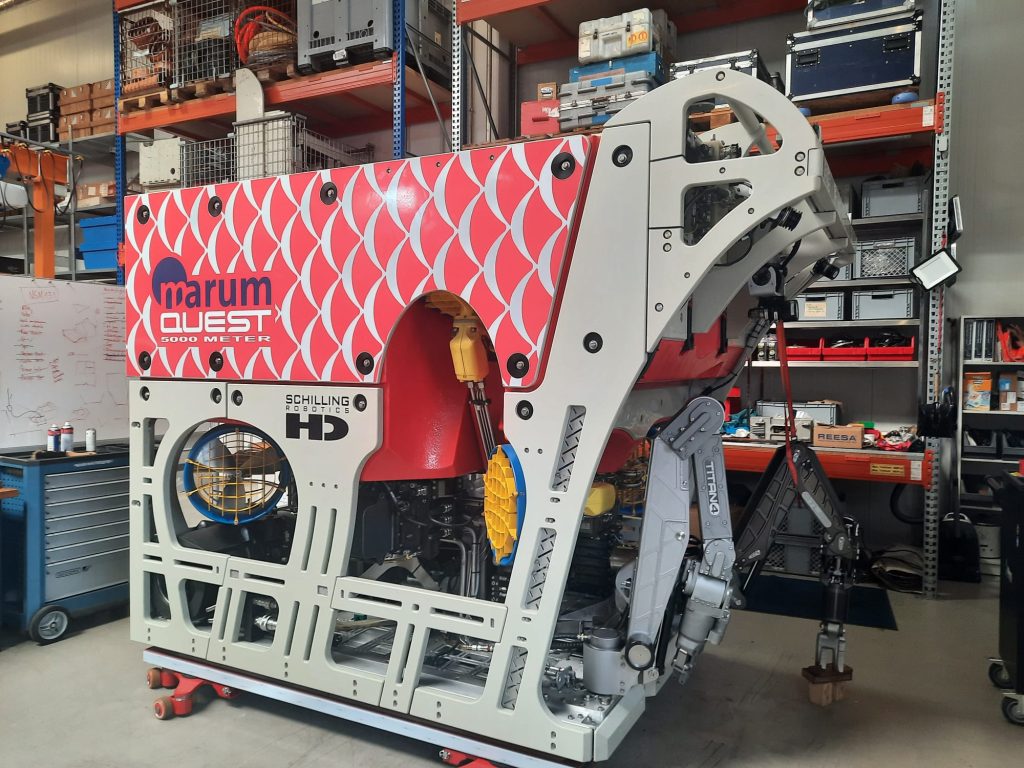
On the second day of the conference, the evening was reserved for the poster session, where I got to present my research for the first time alongside approximately 30 other young scientists. Each presenter was standing next to their poster, ready to answer questions or guide you through the poster. It was a great experience and made me feel more confident about my research. I got to talk to many people, some who work on similar projects, or some who come from a completely different background. This way, I learned how to adjust my presentation to the person who is listening based on what questions they ask. And while it was very exciting, I was also telling the same story over and over again to different people until after two hours of talking, my throat hurt, and I decided to take a look at the other posters and presenters before I headed back to my hostel. The afternoon of the third day was reserved for workshops and excursions. The workshops introduced either technologies, for example for pCO2, pH or acoustic measurements, or aimed to improve skills such as navigating peer review processes or introduced different paths, for example as a data scientist or scientific journalist. I decided to go on one of the excursions that was highly recommended to me, the guided tour through the MARUM, the Bremen core repository of the International Ocean Discovery Program (IODP) and the Geosciences Collection of the University of Bremen. For the evening, a Science Speed Meeting was organized where you could meet other scientists and possibly make some new friends. On Friday evening, the conference was then closed with a Farewell and a Post-Conference Party.

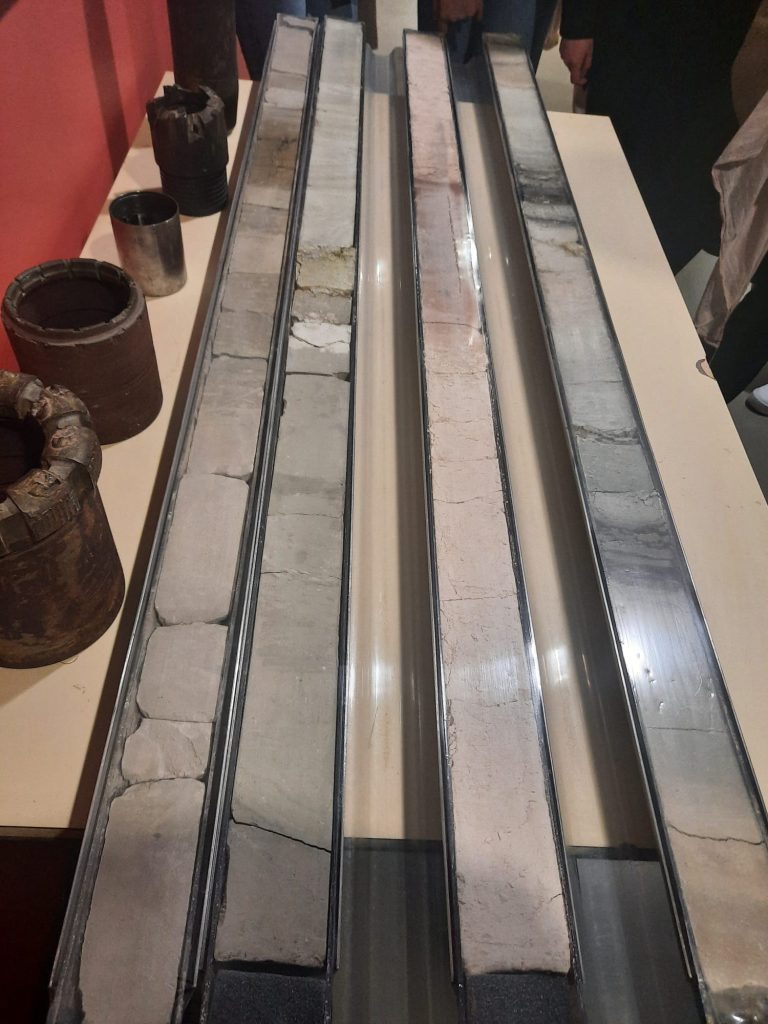
Overall, this was a great experience that increased my confidence in my research and career choice, gave me the opportunity to meet many great people and to gain insights into what is possible after I graduate. What makes this conference so special is that it is mostly organized by young scientists for young scientists, which is reflected in the structure of the conference and the price tag, making it accessible to students. I am definitely going to be in Bremerhaven for the ICYMARE 2025. If you, the reader, are standing at the beginning of your career in marine research, I would highly recommend you come, too.
Josephine Lorenzen
Sea-Level Rise and Vulnerability in Seychelles
My name is Kim Nierobisch. During my studies, I developed a focus on interdisciplinary marine science, completing a Bachelor of Arts in Political Science/Sociology and a Bachelor of Science in Geography, both with a strong emphasis on marine topics. Currently, I am pursuing my Master’s degree in Practical Philosophy of Economy and Environment.
Climate and coastal adaptation planning often operate within a more technical framework, while social, political, cultural, and normative dimensions tend to be sidelined. Beyond the question of who decides where and to what extent adaptation occurs, the normative dimension plays a fundamental role – namely, the essential question of what coastal communities define as worth protecting. My master’s thesis explores the intersection of sea-level rise and vulnerability in Seychelles. Specifically, I analyze how normative values shape coastal adaptation priorities by examining government documents to identify both explicit and implicit strategies. In this context, normative values are understood as collectively held beliefs about what should be prioritized, preserved, or pursued. They reflect societal judgments about what is considered good, just, or desirable. During the workshop, I had the opportunity to reflect on these findings. As part of a focus group discussion, I explored the normative dimension of coastal adaptation priorities more deeply, allowing me to better understand and contextualize normative values, which resonate in decision-making but remain underexamined.
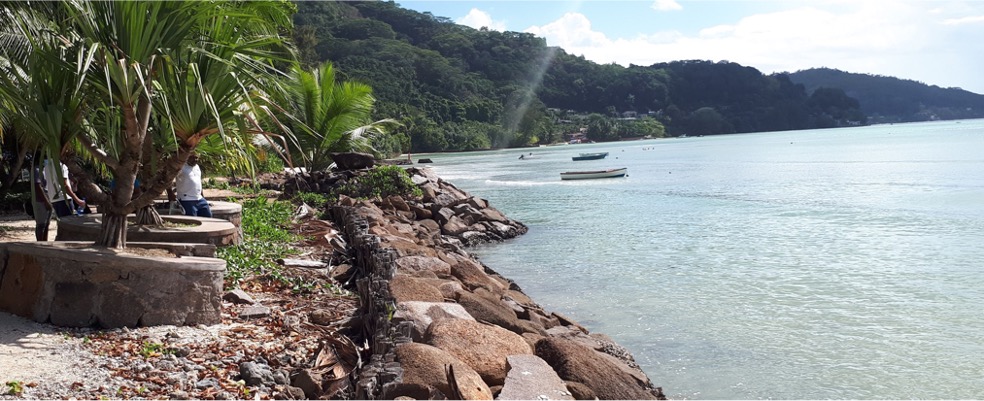
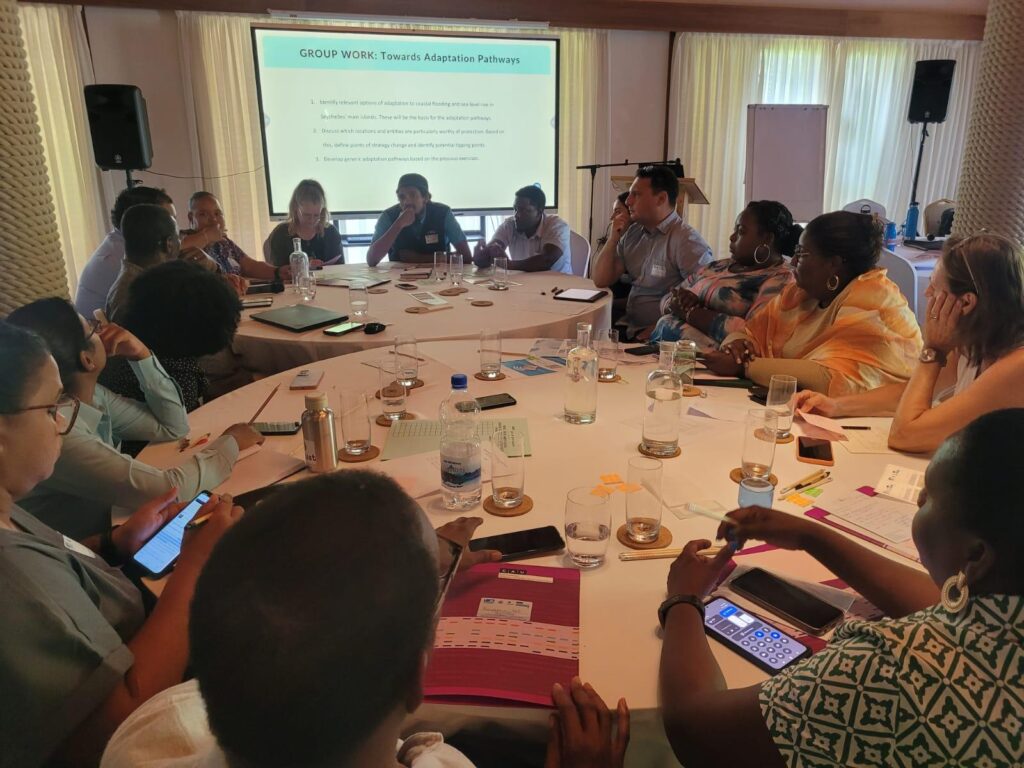
The workshop on Sea-Level Rise Impacts in Seychelles 2024 was organized by the adjust team from Kiel University, the Ministry of Agriculture, Climate Change and Environment (Seychelles), and Sustainability for Seychelles. It brought together stakeholders mainly representing government organizations, environmental consultants, and nature conservation groups. The workshop combined inter- and transdisciplinary approaches to analyze the impacts of sea-level rise in Seychelles, assess coastal adaptation options, and discuss various strategies and priorities.
The process of analyzing and extracting normative values was quite challenging. Although normative values were not explicitly named or fully recognized within a technical dominant framework, they were clearly present and influenced coastal adaptation planning. This underscores the importance of more deeply integrating social, political, cultural, and normative dimensions into research and planning processes. Inter- and transdisciplinary formats have their limits (which should always be defined), but they remain valuable approaches because they provide a more holistic understanding of complex issues. A key takeaway from my experience was understanding that such collaboration requires continuous dialogue and exchange to overcome barriers between different perspectives. It takes a lot of time, effort, and persistence, especially due to the different epistemologies – different ways of knowing and understanding the world, which are shaped by different disciplines, cultures, and experiences – involved.
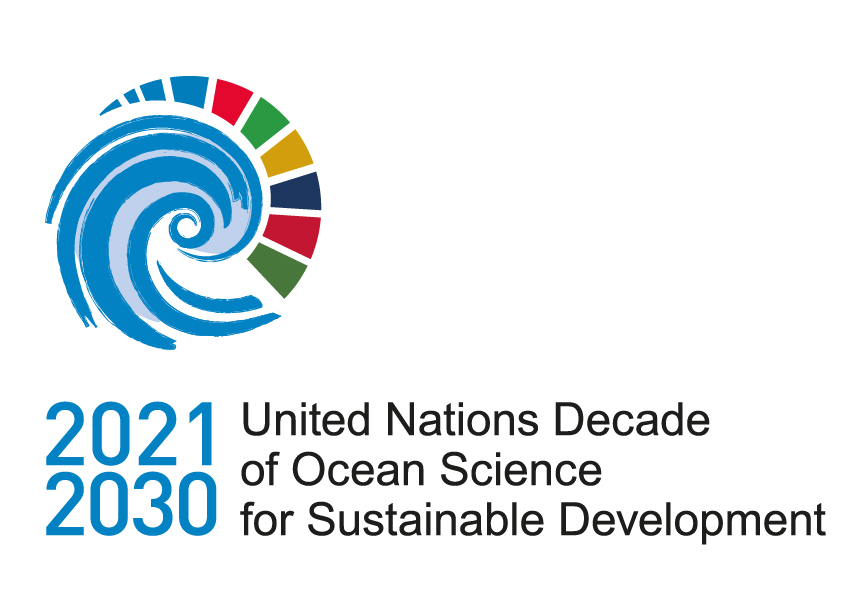
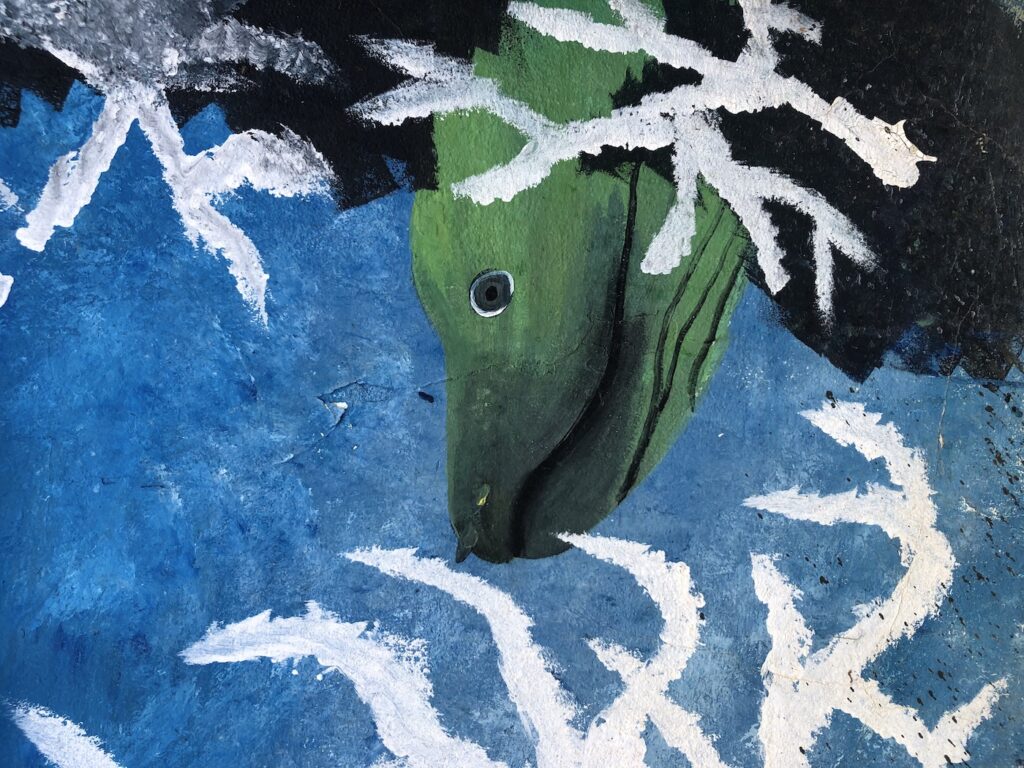
Additionally, I had the opportunity to strengthen dialogue and cooperation within the UN Ocean Decade framework. The initiative was officially endorsed as an UN Ocean Decade activity, focusing on research and planning that promotes sustainable ocean governance through interdisciplinary, transdisciplinary, and integrative approaches. As the youngest member of the German UN Ocean Decade Committee, I recognize the urgency of addressing current challenges, such as the 1.5°C target (which is at risk of failing) and the limited progress on the Sustainable Development Goals (with only around 16% expected to be achieved by 2030). Dialogue, particularly among young ocean enthusiasts and early career ocean professionals, is necessary to tackle these challenges and build a sustainable future together. These conversations offered an important opportunity to promote solidarity, mutual support, and shared motivation in a time of uncertainty regarding global climate and ocean-related goals.
THANK YOU! I am deeply grateful for the many meaningful encounters with incredible people, inspiring moments, and the fruitful, critical exchanges that took place in Seychelles. I would like to sincerely thank the FYORD team and the OceanVoices blog for their long-standing support and collaboration.
Kim Nierobisch
The ASLO Aquatic Sciences Meeting
My name is Mariana Hill, and I work at the Biogeochemical Modelling group at GEOMAR. I’ve been at GEOMAR since 2016, when I started my Master’s degree. Currently, I do my own research in collaboration with other members of GEOMAR and institutes overseas. I am interested in modelling higher trophic levels, such as fish, sharks and whales, and their interactions with the environment. For this, I use diverse tools, for example, dynamic models such as the individual-based multispecies model OSMOSE, as well as habitat niche models using statistical and machine learning algorithms. I work with regional models, allowing me to study in detail local ecosystems. For my doctorate, I focused on the northern Humboldt Current System, which hosts the most productive fishery on the planet. During the postdoc, I have expanded my expertise to other ecosystems such as the western Baltic Sea, the North Atlantic Ocean and the Mexican Pacific.
I attended the ASLO Aquatic Sciences Meeting in Charlotte, USA, from the 26th to the 31st of March. I presented our latest work modelling the habitat of Peruvian anchovies in the northern Humboldt Current System. This conference gathers every two years researchers working on ocean sciences and limnology from all over the world. While there’s room in the conference for scientists working in all kinds of aquatic fields, biogeochemistry and marine biology are especially well covered. I presented at the “Leveraging Modelling Approaches to Understand and Mitigate Global Change Impacts on Aquatic Ecosystems” session, which was one of the largest in the conference, spanning a whole day. This session brought together modellers from several disciplines, so I got the chance to learn about new ecological models that I had not heard of, such as the structural casual models. I was also impressed by the level of expertise of some really young scientists, even in their Bachelor’s. I found it an interesting experience that, despite being an early career scientist, in this conference, I took more of a mentoring role for younger scientists in contrast to my previous conferences when I was still a student.
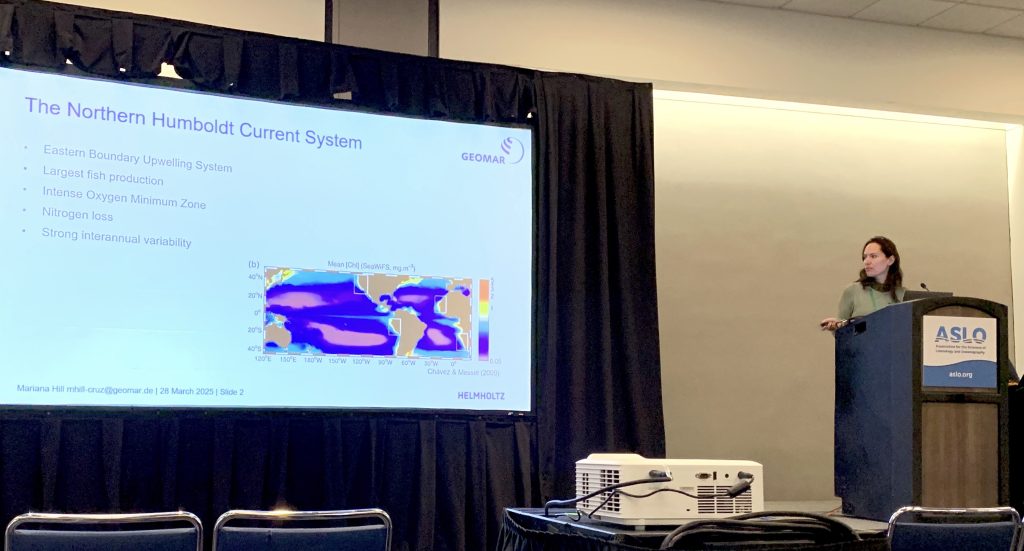
The ASLO conference is very friendly with students and early career researchers, providing plenty of opportunities for these groups, such as workshops on science communication and career development, social events, mentoring and even a mailing list for searching for shared accommodation. I got the chance to reconnect with another Master’s student from GEOMAR who is now working as a postdoc in Arizona and went for a hike in the Appalachian Mountains with some of her friends. The whole experience ended up with being invited to a new working group on Nitrogen. Another non-conventional exchange happened at the parking lot of our accommodation when everyone had to evacuate due to a false fire alarm, and my roommate and I met a senior scientist working in Texas who reminded us of the most basic questions of why we do science. Don’t just write proposals on the hot topics, “do what you love and your time will come”.
ASLO 2019 was the first conference that I attended when I started my doctorate. Back then, I found the possibility of chairing a session at a future conference attractive. Later on, I learnt that this is not such an easy task since you have to look for co-hosts and write a session proposal. However, this year, when I got my letter of acceptance to present at ASLO, I also got an invitation to chair one of the sessions that had been proposed by the organisers but did not have a host yet. I expressed my interest and became the chair of the “Fish and Fisheries” session! This was a very rewarding experience since I got to know the speakers of the session, as well as my co-chair, and I learnt what it is to be “on the other side of the table” during a session. I learnt some useful practices that I will apply from now on whenever I present at a conference session. For example, something I did not use to do but now I consider important is to introduce yourself to the session chair before the session starts. As a chair, I really appreciated this since I could identify the speakers and know if anyone was missing.


Keep an open mind when going to ASLO and step out of your comfort zone to visit not only the sessions related to your main research interest but also other sessions and workshops; you might get nice surprises. It is also a great setting for getting career advice from people who are not so close to you or are not involved in your work. Don’t be scared of talking to senior researchers, I have never encountered a person who is not happy to talk to me during a conference; in the worst-case scenario, you might just need to line up for a couple of minutes, but the time spent waiting is totally worth it! I have got some of the best ideas for my science communication strategies at conferences, from a scientist who was not very comfortable speaking English bringing a buffet of questions about his talk for the audience to pick from, to an improv workshop on how to speak freely and engage with the audience through a positive attitude hosted by a Hollywood actor. Always have a notebook for taking notes with you because your brain will be boiling with new ideas during the whole conference.
I recommend attending the ASLO conference, especially to early career researchers, to biologists and biogeochemists and to anyone looking for collaborations in the USA. A special recommendation for shy scientists is to try different ways of networking, not just the typical chats during the coffee breaks. For example, the icebreakers and mixers usually have specific formats to integrate everyone into small groups. Talking to the person sitting next to you during the plenary session might just get you to meet a top scientist in your field. This is how I got to know about a new project on whale monitoring in the Virgin Islands! Furthermore, asking questions one-to-one to the presenter after the session or plenary is also a great way to start a conversation. And, finally, I totally recommend any early career scientist to host a session; it is a lot of fun and, at least in ASLO, the format is so friendly that it will cost you barely any effort.
Mariana Hill
Ocean Acidification
Does Eating Plastics Really Kill Ocean Animals?
The ocean has long been the end of the pipe for plastic pollution, with ocean wildlife bearing the brunt of the overproduction and overconsumption of single-use plastics. The world now produces more plastics than at any point in history—hundreds of millions of tons each year—and more than 11 million metric tons are flowing into the ocean annually. That is equivalent to more than a garbage truck’s worth of plastics entering our ocean every minute.
How does plastic kill ocean animals?
When swallowed, these plastics can be deadly—causing blockages, twisting organs or even puncturing organ walls. Ingested plastics have been found in nearly 1,300 ocean animal species, including every family of mammals and seabirds, and all seven species of sea turtles. Concern about the ecological implications of plastic-induced death rates has fueled calls for policy solutions at every level of government, from the local to the international. However, it is hard to set policy goals without understanding the measurable risk plastic ingestion poses to these species.
Ocean Conservancy scientists, along with top researchers at the University of Toronto, Federal University of Alagoas in Brazil and the University of Tazmania, worked together to answer the question: how much plastic is too much? They sought to determine how much ingested plastic is likely to cause death in seabirds, sea turtles and marine mammals. In other words, we sought to figure out the actual number of pieces and volume of macroplastics (plastics greater than 5 milimeters) that those animals must have in their gut to cause death 90% of the time.
Get Ocean Updates in Your Inbox
Sign up with your email and never miss an update.
How much ingested plastic does it take to kill an ocean animal?
We compiled data from more than 10,000 necropsies—animal autopsies—of seabirds, sea turtles and marine mammals collected between the years 1900 and 2023 where we knew both the cause of death and whether and how much plastic the animal had eaten.
The results were alarming. We were surprised by the very small amount of plastic it takes to kill a seabird. We found that rubber (the kind balloons are made from) is the deadliest form of plastic to seabirds when ingested. It only takes six small pieces of rubber—each, on average, smaller than a pea in size—to kill a seabird.
Sea turtles are also surprisingly vulnerable, given their massive size: Less than half a baseball’s worth of plastics is likely to kill one in two Loggerhead turtles. Shockingly, nearly half of all sea turtles in our database had plastics in their guts at their time of death, which is especially troubling when you consider that five of the world’s seven sea turtle species are International Union for the Conservation of Nature (IUCN) red-listed as threatened.
Our models found that marine mammals are especially vulnerable to the impacts of lost fishing debris, also known as ghost gear; when swallowed, with just 28 pieces—each smaller than a tennis ball—enough to kill a sperm whale. Additional key findings from our research for each of the animal groups we studied include:
- Seabirds
- About 35% of seabirds in our dataset had plastic in their digestive tracts.
- Roughly 5% of seabirds who had plastics in them died specifically from plastic ingestion.
- Hard plastics were consumed more frequently than all other material types, followed by soft plastics, fishing debris, rubber and foams.
- When a seabird consumes only three pieces of rubber, like balloon shreds, our models predict there is a 50% chance this consumption will lead to the animal’s death.
- Marine Mammals
- In marine mammals, fishing debris was the most frequently ingested plastic material, followed by soft plastics, rubber, hard plastics, foam and cloth.
- Roughly 12% of marine mammals in our dataset had plastic in their digestive tracts.
- Nearly 6% of marine mammals from our dataset with plastics inside died as a result of eating those plastics.
- When a marine mammal consumes just 12 pieces of soft plastic—like grocery bags—our models predict a 50% chance this action will lead to the animal’s death.
- Half a soccerball’s worth of soft plastic (by volume) is enough to kill 90% of individuals in most seal, sea lion, dolphin and porpoise species.
- Sea Turtles
- In sea turtles, soft plastics like grocery bags were found to be the most frequently ingested plastic material, followed by fishing debris, hard plastics, foams, rubber and cloth.
- Nearly 50% of individual sea turtles in our dataset had plastic in their digestive tracts
- About 9% of turtles that ingested plastic in our dataset died as a result of eating it.
- Over 4% of all turtles in our dataset died directly from plastic ingestion.
- Just 1.5 golf ball’s worth of plastic (by volume) is enough to kill 50% of adult loggerhead sea turtles.
What can this research do?
This research emphasizes the risks macroplastic pollution poses to the life of marine animals, and the risk varies by species and plastic type. Our findings provide key insights to inform future research and policy actions aimed at reducing plastic pollution and the harm it causes to ocean wildlife and ecosystems. These results also underscore that important interventions like beach cleanups and better management of plastic waste are critical for protecting marine species. Because some types of plastics are deadlier than others when swallowed by marine life, policies targeting those specific items (e.g., plastic bags and balloons) can play an important role in protecting vulnerable species from the harms of plastic pollution in the future.
It is imperative to tackle the global plastics crisis by taking actions at all levels, from local to federal to international. In the U.S., bills like the REUSE Act—bipartisan legislation that would require examination and enhancement of existing reuse and refill systems—is just one way to make a difference. Add your name now and call on lawmakers to support and pass the REUSE Act.
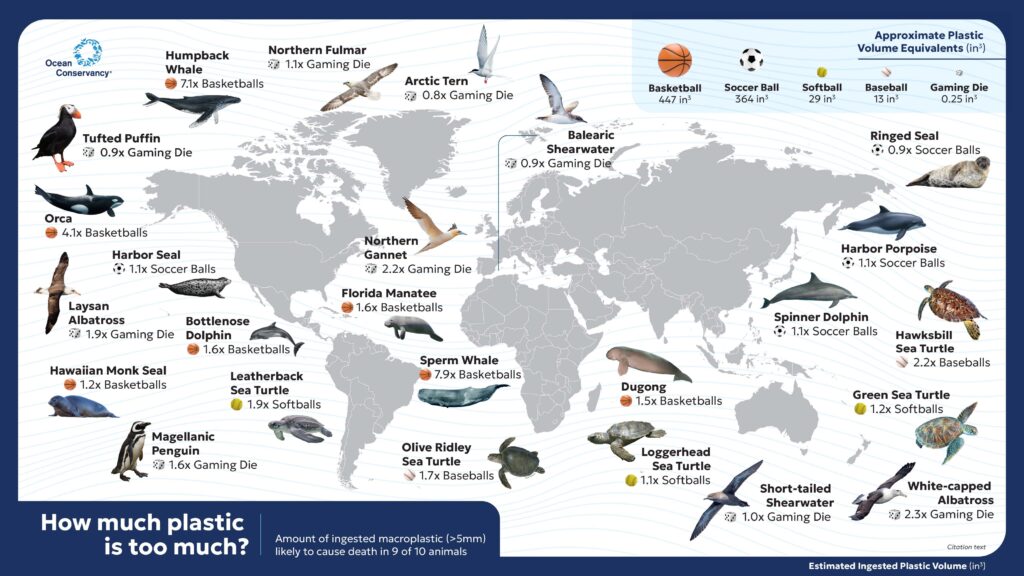
The post Does Eating Plastics Really Kill Ocean Animals? appeared first on Ocean Conservancy.
Ocean Acidification
FYORD Travel Grant Reports: November 2025
From DAAD Summer School to Doctorate: Reflections at ICON 9
Hi! I am Riel Carlo O. Ingeniero from the Chemical Oceanography Department at GEOMAR. I recently had the opportunity to attend ICON 9 (International Conference on Nitrification and Related Processes) last July 2025, one of the leading conferences focused on advances in the nitrogen cycle. It was an honour to be selected to present my research twice – first during the Early Career Workshop on the opening day, and then through a poster presentation on the second day of the main conference.
ICON 9 brought together many of the most prominent names in marine nitrogen cycle research. I was fortunate to meet and engage with inspiring scientists, including Dr. Boran Kartal, Dr. Hanna Marchant from the Max Planck Institute in Bremen, Dr. Claudia Frey from the University of Vienna, Dr. Scott Wankel from Woods Hole Oceanographic Institution, Dr. Bo Thamdrup from the University of Southern Denmark, and Dr. Qixing Ji from HKUST. I also had the chance to see Dr. Bess Ward in person, someone whose work I’ve long admired.

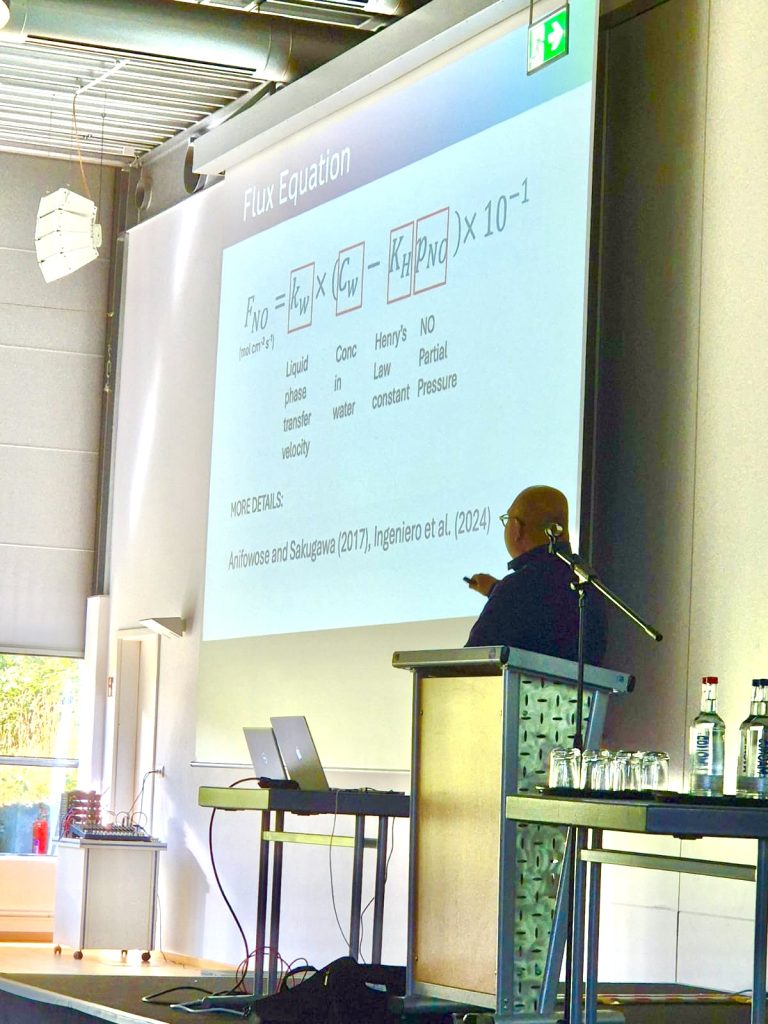
The conference was hosted by the Max Planck Institute for Marine Microbiology in Bremen, a place that holds deep personal significance. I first visited it 13 years ago during a DAAD International Summer School Biodiversity: Diversity of Ecosystems, Genes, and Species at the University of Osnabrück. That visit, including a tour of the Max Planck Institute and MARUM led by Prof. Dr. Rudolf Amann, played a pivotal role in my decision to pursue a career in marine science.
I recently completed my doctorate at Kiel University in June this year, and I am incredibly grateful for the excellent education and world-class research environment that Germany offers. Under the supervision of Prof. Dr. Hermann W. Bange and funded by the DAAD Research Grants – Doctoral Programmes in Germany and the SO305-BIOCAT-IIOE2 project, I have had the opportunity to work on cutting-edge research in marine biogeochemistry, with a particular focus on nitric oxide (NO) dynamics in the ocean.
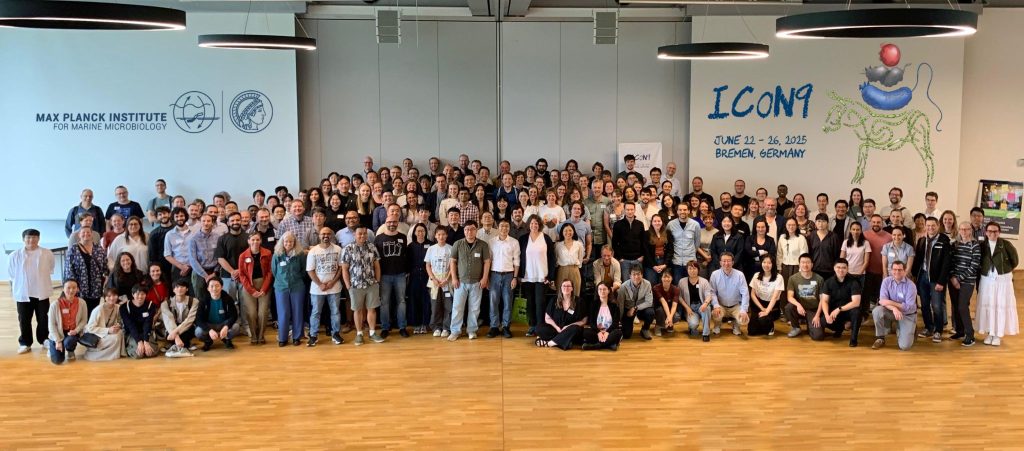
Presenting in front of over 100 participants during the ICON 9 was not only a rewarding experience but also excellent preparation just days before my doctoral defense and oral examination. Overall, ICON 9 was a meaningful and inspiring milestone, a full-circle moment in my scientific career.
Special thanks to FYORD and Kiel Marine Science for supporting my growth as an early-career marine scientist.
Riel Carlo
15th International Conference on Palaeoceanography, India
When my Uber wound through the chaotic traffic of Bengaluru at 2 am, I knew this conference would be different from the ones I was used to in Germany. I had just arrived in India for the 15th International Conference on Palaeoceanography (ICP15), supported by the FYORD Travel Grant, and was about to spend a week combining science with new cultural impressions.
ICP is a conference with a unique size and structure. It takes place only every three years, and everyone in the field is looking forward to the meeting – indeed, it rather feels more like a “big get-together” than a conference. The program is linear, with one topic per day and no parallel sessions. This allows for focus and provides more room for discussions. I also had the feeling that this format is more comfortable for Early Career Scientists. You don´t have to plan a lot in advance, and you never feel like you´re missing out on anything. But perhaps the best way to capture the spirit of ICP is to take you on a walk through a typical day:
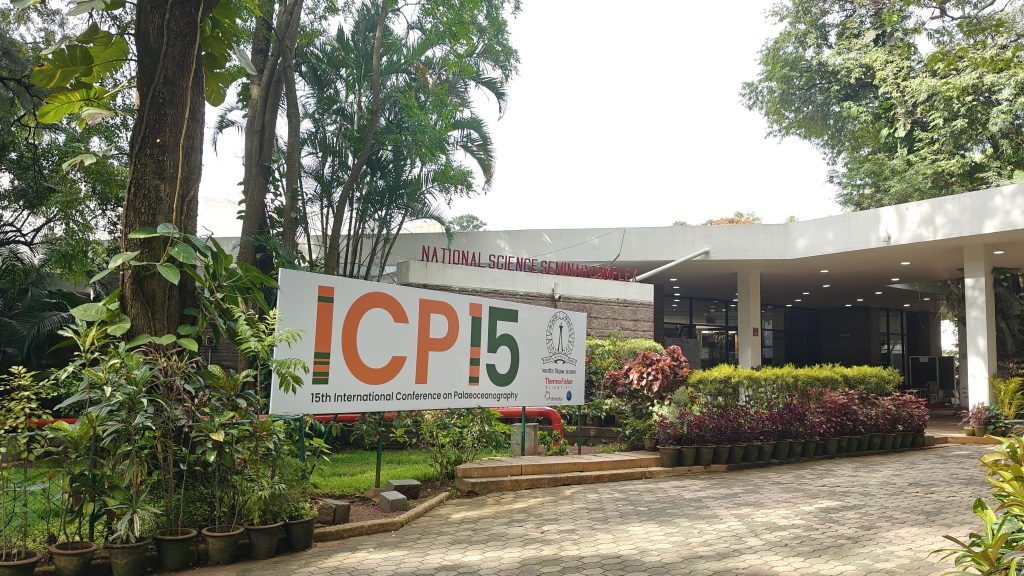
The days started with a short ride in one of the green-yellow tuk-tuks to the conference venue, which was located in one of the few green spots of the city on the campus of the Indian Institute of Science. The mornings were covered by talks by invited speakers. Actually all talks at ICP are only given by invited speakers, and you can only be selected for a talk once in a lifetime! Accordingly, we were able to enjoy some excellent presentations. Before lunch, there was a long plenum discussion with the five speakers from the morning. It was not only a great opportunity to hear different opinions on specific sub-topics, but also to show the connections between different talks, highlighting the most urgent research topics and gaps different groups are currently working on.
During lunch break, we could choose between a variety of typical Indian foods. Even though the chefs took care that the food was not too spicy for the foreign wimps, you never knew if you would sweat after the next bite. The highlight was definitely the daily Dosa, a South Indian speciality: It´s a thin, savory and crispy fried pancake made from fermented dough served with chutneys and sambars.
Long poster-sessions took place in the afternoons. All posters were put up during the whole week, which is also a big difference from huge conferences, where you usually just have a slot of one day or a few hours. It was enough time to look at the other posters, get inspired and exchange ideas. I also presented a poster with the results of the first two years of my PhD, in which I investigate climatically controlled changes in sedimentation at a site in the Southern Ocean close to Antarctica. We were able to link these changes on glacial-interglacial time scales with the ocean circulation and gain insights into the evolution of deep-water formation during times of rapid warming. Onall days, I had fruitful discussions about my work with experts in the field.

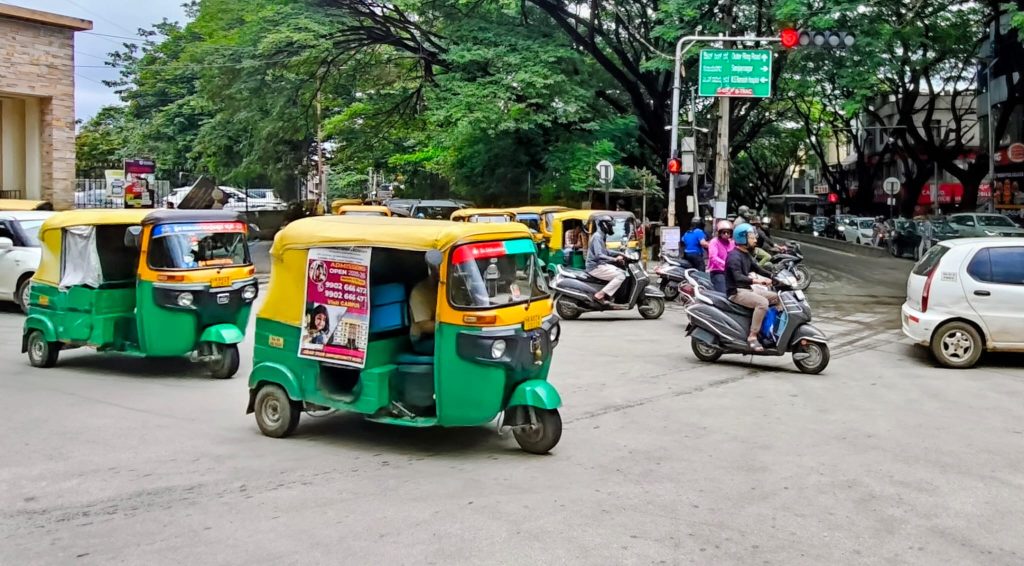
Each day was concluded with a perspective lecture by leading scientists fromthe different fields. These lectures were inspiring and an amazing summary, as they provided a broader context and deep insights into challenges and directions of palaeoceanographic research.
With the end of the scientific program, networking was not over yet, but had just started. The evenings offered a great opportunity to approach people and get into contact in a casual atmosphere. Whether at the icebreaker, conference banquet or at the Palaeomusicology Concert – another ICP tradition, which goes back to Nicholas Shackleton, paleoceanographer and skilled clarinet player. It´s an evening where the musical ones among the scientists show their skills. Singing, bagpipes, and even a small spontaneously formed band made the evening unforgettable!
Looking back, I am grateful for the opportunity to attend ICP15 with the support of the FYORD Travel Grant. It was both a scientific and cultural experience, and a great chance to meet old and new friends and colleagues. I can highly recommend ICP to other early career researchers in the field due to its unique format and special atmosphere!
Moritz
Gordon Research Conference in Animal-Microbe Interactions
My name is Igor Duarte, and I am a third-year PhD student at the Marine Symbiosis Lab, where we explore the origins and molecular novelties of close associations between bacteria and marine animals. The partnership I am mostly focused on in my PhD is between a free-living, mouthless flatworm from the genus Paracatenula, and the chemosynthetic bacteria from the genus Candidatus Riegeria that live inside its cells. In this system where no mouth is present to let nutrients in, the bacteria and are chemosynthetic, which means. After hundreds of millions of years of coevolution, this highly specialised symbiosis is now the only way by which each of these organisms can survive, and a topic of high interest to understand the evolution of such longstanding partnerships.
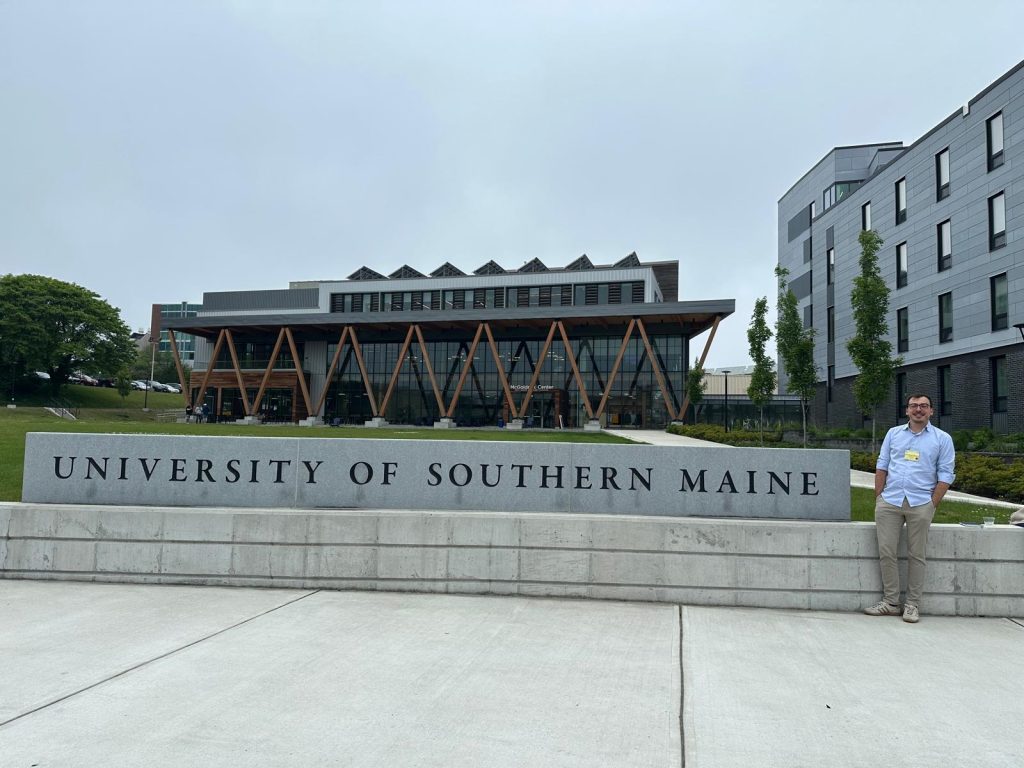
The FYORD Travel Grant programme supported my participation in the Gordon Research Conference (GRC) in Animal-Microbe Interactions, which this year took place in Portland, Maine, USA. Throughout the five days of the Conference, about 180 attendees from all over the world shared their main findings from the field of symbiosis, including the topics microbiome, intracellular microorganisms, parasitism, and evolution and molecular novelties of symbiotic associations. Additionally, the event was combined with a Gordon Research Seminar, which allowed early-career researchers to network more freely and exchange experiences from each one’s PhD and postdoctoral trajectories. I had the opportunity to present a poster entitled “Clade-specific genome evolution of Ca. Riegeria, the obligatory endosymbiont of a mouthless flatworm”, where I summarised the latest results from my PhD project.
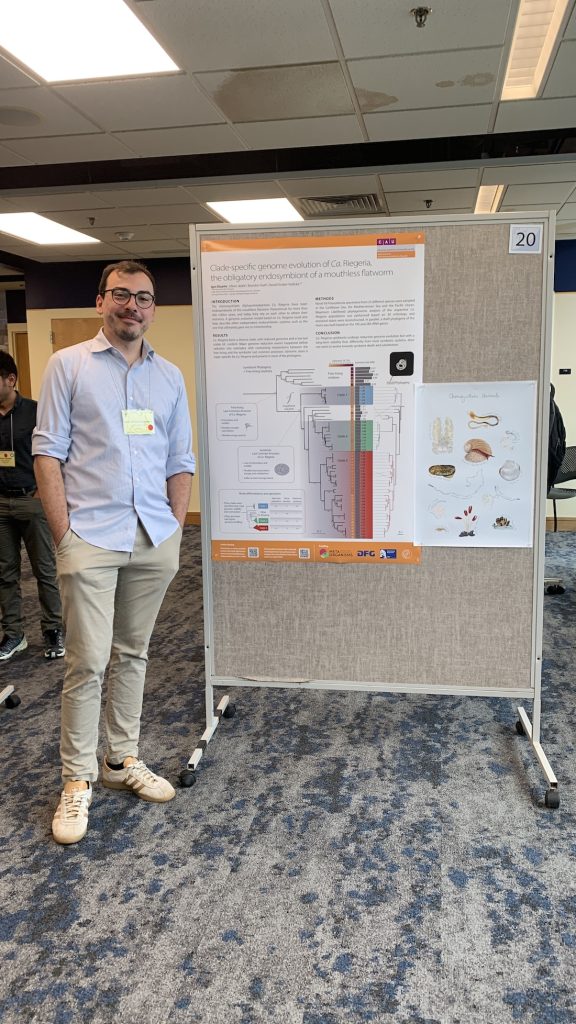
What I liked most about participating in this conference was how nicely it was conceptualised, with the goal of creating a relaxed environment to foster relevant connections between new and veteran attendees. In such a set-up, not only was I introduced to cutting-edge methods which are being used to answer relevant questions from the field, but I also had the opportunity to discuss them directly with the authors. Another positive aspect was that the speakers were encouraged to share problems that they faced during their experiments to show what real science looks like and to showcase how such issues can be overcome. Overall, I believe the conference was a game-changer for my PhD as I could get to know the main researchers in the field, whom I had so far only read about, and build the feeling of being part of a diverse community of symbiosis-enthusiasts.
Igor
Ocean Acidification
Drifting in the Post-PhD Current
Delivering
Five years into my PhD and I still wasn’t done. To be fair, I hadn’t exactly had an easy ride, starting just weeks before COVID lockdowns were announced, becoming a mother in my second year, and trying to build a new model system from scratch (Pipefish and their male pregnancy are adorable, but they don’t always make life easy). My work was trial and error, and it took me more than a year just to find a story worth telling. But eventually, the words came together. I had a draft for my first chapter. It was written! Only… was it enough? Basic research with no direct application, no flashy headline — just curiosity-driven science. Many of us know that creeping voice: does this even matter?
So, instead of calling it finished, I dove into one more dataset. In a rush of determination, I moved back into my old childhood bedroom at my parents’ house, spending days and nights analysing, writing, rewriting. By mid-November I had a plan: “Done by Christmas.”
Of course, life had other ideas. A hand surgery in between (note to future PhDs: don’t do that with a deadline). But somehow, even with one hand and one finger sticking out of a cast, I wrote. Introduction. Synthesis. Outlook. Acknowledgements.
By Christmas I wasn’t done, but close. My mother stepped in to take care of my daughter while I revised paragraph after paragraph under the Christmas tree. And then, in early January 2025, the moment came: university reopened, I submitted my dissertation, and it was gone. Done. Crazy. For two days, I let myself breathe and celebrate. Then reality hit: only six weeks until my defence.
Defending
Days passed and my defence presentation kept growing. Twenty slides, then thirty, then sixty. Every time I thought it was enough, I added more — extra data, backup information. Not because I wanted to show it all, but because I wanted to be ready for those tough questions. At the same time, I knew this wasn’t just about surviving the defence. I wanted to celebrate it. I booked a big conference room, reserved a restaurant table, and sent out invitations. And suddenly it felt real: my family travelling in from far away, a friend making the trip from abroad, old classmates and colleagues all saying yes. That was overwhelming in the best way. Practising my talk became part of my daily routine. Alone in my office and in front of colleagues or friends. I have to admit: I’ve always liked presenting more than drowning in raw data, so this part was actually… fun.
The morning of the defence, I woke up to an email that made my heart stop: Water pipe leakage at university. All buildings evacuated. No exams allowed. Seriously? After weeks of preparing, was it all about to fall apart? What I hadn’t expected was the incredible support around me. Within minutes, my PI had secured a new venue. Huge shout-out to the Marine Science Campus for stepping in and hosting me! And somehow, despite the last-minute chaos, everyone showed up.
During the defence itself, my brain switched to autopilot. Over forty pairs of eyes were on me, waiting for me to present and defend five years of work. The questions that followed were tough and sometimes tricky, but also sparked real conversations. Ninety minutes passed in a blur. Then it was done. I was done. A doctor of natural sciences – me? Hell yeah. The rest of the day was exactly what I had dreamed of: celebrating, telling stories, reliving the journey with the people who had been part of it. Finally enjoying this thing, I had worked toward for over five years. Relief and happiness like I had never felt before. And, as the cherry on top, I got the nicest doctoral hat that I could have imagined – with a glowing giant microbe and two crocheted guinea pigs perched proudly on top.

Drifting
The night of my defence, I went to bed expecting to wake up reborn – full of joy, energy, freedom. Instead, I woke up tired. Deeply tired. And strangely quiet inside. There was still paperwork to finish before I could officially call myself a doctor, and manuscripts waiting for submission. But the constant pressure, the expectations, the dependence on PIs, the weight of proving myself worthy of a title that even shows up in your passport, was suddenly gone. In its place came exhaustion, but also a growing sense of lightness. I gave myself a week to move slowly: sleeping, recharging, joining a retreat with my colleagues. Bit by bit, relief started to settle in. I really made it.
And the moment it truly sank in wasn’t the defence or the party, but a few weeks later. Walking out of the administration building at Kiel University with my PhD certificate in hand – that was the moment it felt real.
Kim
-
Climate Change4 months ago
Guest post: Why China is still building new coal – and when it might stop
-
Greenhouse Gases4 months ago
Guest post: Why China is still building new coal – and when it might stop
-
Climate Change2 years ago
Spanish-language misinformation on renewable energy spreads online, report shows
-

 Greenhouse Gases2 years ago
Greenhouse Gases2 years ago嘉宾来稿:满足中国增长的用电需求 光伏加储能“比新建煤电更实惠”
-
Climate Change Videos2 years ago
The toxic gas flares fuelling Nigeria’s climate change – BBC News
-

 Climate Change2 years ago
Climate Change2 years ago嘉宾来稿:满足中国增长的用电需求 光伏加储能“比新建煤电更实惠”
-

 Carbon Footprint2 years ago
Carbon Footprint2 years agoUS SEC’s Climate Disclosure Rules Spur Renewed Interest in Carbon Credits
-
Renewable Energy5 months ago
US Grid Strain, Possible Allete Sale



